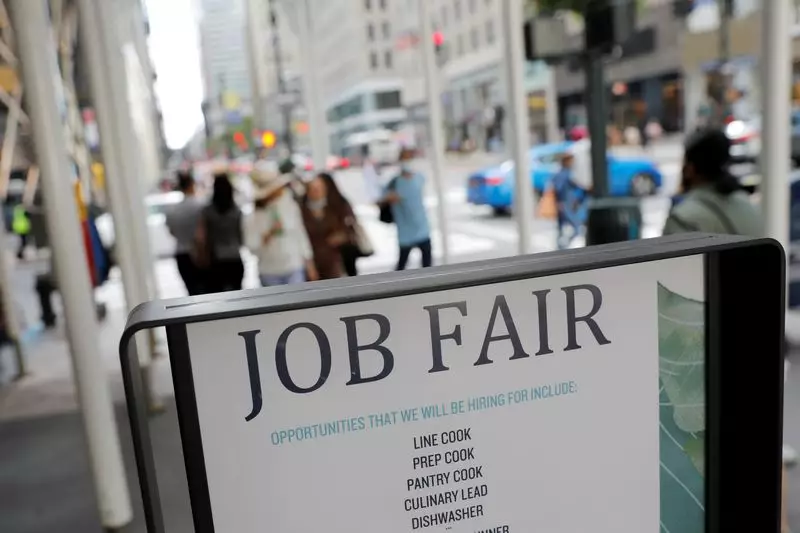The recent report from the Labor Department shows a decline in the number of Americans filing new applications for jobless benefits. This decrease comes as layoffs in the US job market remain low, which could potentially ease concerns about the state of the labor market. The weekly jobless claims report is viewed as the most up-to-date data on the health of the economy and also indicates a reduction in the number of individuals on unemployment rolls. This latest data suggests that there may not be an urgent need for the Federal Reserve to implement a significant interest rate cut this month.
Most economists anticipate that the Federal Reserve will start its easing cycle with a quarter-point rate reduction, as domestic demand remains steady. The recent rise in unemployment to 4.3% in July due to a decline in hiring had raised alarms among investors and sparked fears of an impending recession. However, experts like Ian Shepherdson, chief economist at Pantheon Macroeconomics, state that the jobless claims data reflect a gradual, rather than a sharp, increase in unemployment rates.
Initial claims for state unemployment benefits dropped to 227,000 for the week ending August 31, the lowest level since early July. This decline was unexpected, with economists predicting 230,000 claims for the same period. It is worth noting that claims had been fluctuating around the 230,000 level following a decrease from an 11-month high due to seasonal influences from the automotive industry and Hurricane Beryl. The unadjusted claims also fell slightly, with a notable increase in Massachusetts offset by declines in Texas, New York, and other states.
The Federal Reserve’s “Beige Book” report supported the jobless claims data, describing employment levels as “generally flat to up slightly in recent weeks.” While some districts reported firms reducing shifts, hours, and leaving positions unfilled, actual layoffs remained infrequent. However, the report also highlighted the increasing challenges faced by job seekers, with longer waiting times to secure a new job.
Although the jobless claims data does not impact the upcoming employment report for August, scheduled for release on Friday, it provides valuable insights into the labor market. Economists predict a rise in nonfarm payrolls by 160,000 jobs in August, with the unemployment rate expected to dip to 4.2% from 4.3% in July. However, the recent ADP National Employment Report paints a slightly different picture, showing a slowdown in private payrolls growth. This discrepancy between the ADP report and the BLS employment report raises questions about the accuracy of such forecasts.
While the decline in jobless claims and stable employment levels are positive signs for the labor market, there are underlying concerns about the future trajectory of job growth and unemployment rates in the US. It is crucial for policymakers and economists to closely monitor these trends to ensure the overall health and stability of the economy.

